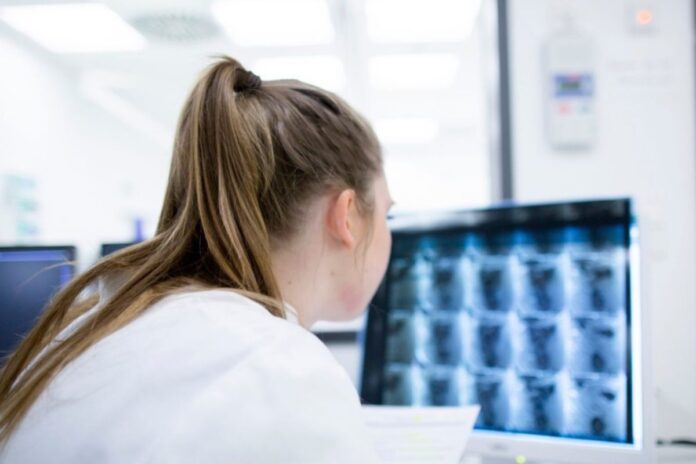Technological advancements in the healthcare industry have been allowing medical practitioners as well as radiologists to provide the best treatment solutions to patients across the world. One such highly advanced solution helping medical PR actioners is the picture archiving and communication system (PACS), which is a computerized means of replacing the roles of conventional radiological film.
In simple words, this system will only save the soft copy of the result, which can be stored, extracted, transmitted, and displayed digitally. The best part about this PACS medical imaging technology is that there is no involvement of hard copies of test results. So, it is a helpful technology for the healthcare industry?
What is PACS?
Before anything else, it is important to understand the PACS medical imaging technology. This can be also regarded as a picture archiving and communications system, which will have a computer system and a storage device where all the test reports will be stored. Healthcare practitioners can store the images and then use them to diagnose and provide the best treatment to their patients, based on their past medical history.
Of course, the old and traditional methods were similarly useful, but they involved the use of hard copies of test reports, which were very hard to maintain for the clinics and hospitals. Thanks to the mini-PACS technology, it becomes easy for even small clinics to afford the technology.
How does it work?
The PACS system is comprised of structures and components that are aimed to allow healthcare professionals to provide accurate and quality operations to their patients. The PACS system comprises a few technical components that work together for effective medical imaging. It is important to understand that the PACS works with RIS (Radiology Information System), which allows radiologists to record patient histories and schedule appointments. The main structures are as follows:
Main Server – this is the most important part of the PACS system that includes a database structure, RIS interface, web servers, etc.
Database – This can be also call a “Store Room”, where all the images and data will be store and save. The data and files can be easily access using the computer device attached to the database.
Health Level Seven – This is the component of the PACS system that is determine to receive all the info caused by the RIS and then forwards it to the PACS.
Apart from the above parts, there are some imagining modalities that will do the scanning to produce an image. And then there is a workstation where the doctors can view the images that are capture for a thorough study.
Reasons to use a PACS System
Data safety
One of the best things about using a PACS system is that the images that have once been acquire onto PACS it cannot be lost, stolen, or misfiled. Unlike the traditional hard copies, the soft files in the PACS system remain store in the database and can be easily extract. So, once the PACS system is install, the images are always available, which means no patient appointment is cancel, no clinical decision deferred, or any trouble. Since no images are repeat, which means no time is waste by doctors or other healthcare workers looking for missing films.
Easy to connect
To start using a Mini-PACS system, there is no need to use a high-speed internet connection, a normal one will be enough. The PACS system can be easily connect to the local server or a server attached to the internet. If required, healthcare practitioners can also use a cloud server, which is a much better option as this allows access to files from virtually anywhere in the world. Storing all data on the cloud also results in freeing the device’s memory, which means it performs even faster.
Multilocation viewing
As we already mentioned that the PACS system can be integrate with cloud storage, it allows simultaneous multi-location viewing of the same image. Unlike conventional film, which can only physically exist in one place, the digital images of PACS can be access by multiple people from different locations. So, if you have a family doctor who also needs a second opinion from a specialist located in another country, they both can have access to the image digitally to discuss the case and provide the best treatment possible.
Automatic image grouping
Keeping your test reports in order can be a hassle that almost every patient and their family members must have experienced. This problem is also sort by the RIS radiology information system and PACS medical imaging systems as this combo allows the images to be automatically group into the correct examination. This means you will get the best treatment possible, based on the available reports as they are all aligned in the proper manner. And the best part is that all the imaging studies of a patient are immediately available on the PACS.
Cost-effective
Since there is no need to take a print out of the imaging and reports, a PACS system turns out to be an affordable decision for healthcare professionals as there is no need to spend on film, film packets, film processing chemicals, etc. Apart from this, there is also no need to waste your precious time. While cost-effectiveness is an added benefit, the prime reason to use a PACS system is the huge increase in the efficiency of data management it provides.
So when you are a healthcare professional or a radiologist, opting for advanced technology like the RIS radiology information system and Mini-PACS system can be a great support for providing the best healthcare treatment to your patients. You will have access to the reports and imaging digitally from virtually anywhere and the case can be discuss with other doctors across the world without the hassle. And the best part is that the data once stored in the PACS system remains safe forever.
